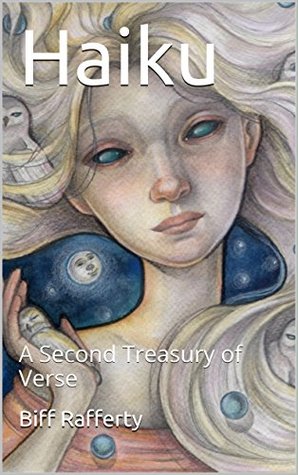Read Haiku: A 2nd Treasury of Verse (Haiku: A Treasury of Verse) - Biff Rafferty | PDF
Related searches:
Haiku Poems Lesson: Teaching Poetry to 2nd Grade Students
Haiku: A 2nd Treasury of Verse (Haiku: A Treasury of Verse)
2264 2951 1724 3227 3044 4805 4853 4935 3209 2264 379 203 4975 2383 3710
The haiku foundation doesn’t endorse an official definition of haiku in english. In the united states, most people learn about haiku in grade school. American children are taught that haiku is a japanese poetry form written in three lines: 5 syllables in the first line, 7 syllables in the second, and 5 syllables for the third.
A haiku in english is an english-language poem written in the japanese poetry style known as haiku. The degree to which haiku in english resemble classic japanese haiku varies, but many of these poems draw on short, concise wording and a reference to nature.
The term haiku is derived from the first element of the word haikai (a humorous form of renga, or linked-verse poem) and the second element of the word hokku (the initial stanza of a renga).
A free verse poem and a haiku may both lack any rhyme scheme or pattern of rhythm. Free verse poetry and haiku both have pre-modern, non-english origins in their respective cultural backgrounds.
H is for haiku: a treasury of haiku from a to z by sydell rosenberg (illustrated by sawsan chalabi) writer’s rumpus reports that this book is “a delightful exploration of the alphabet through haiku. Each page explores a moment in time with lovely, lyrical and luscious language.
This ancient form of poem writing is renowned for its small size as well as the precise punctuation and syllables needed on its three lines. Haiku poems are typically about nature and usually about a specific season.
Haiku (俳句, listen (help info)) is a type of short form poetry originally from japan. Traditional japanese haiku consist of three phrases that contain a kireji, or cutting word, 17 on (a type of japanese phoneme) in a 5, 7, 5 pattern, and a kigo, or seasonal reference.
Com: haiku: a treasury of verse ebook: rafferty, biff: kindle store.
Haiku is perhaps more so a symbiotic type of poetry than most other genres, as its very origins – via hokku – relied on a second verse to complete an internal couplet in a much longer multi-poet multi-poem and linking form called renga, and later renku. 1 we could say that haiku is a relationship of mutual benefit or dependence; that haiku (plural and single spelling) is one organism and the reader at large (individuals and groups of individuals) is the second organism.
17 syllables in a 5/7/5 scheme: that holds a lot of potential to send a neat package.
Photo by masaaki komori on unsplash t he most basic definition of haiku is a three line poem where the 1st and 3rd lines are 5 syllables and the 2nd line is 7 syllables. Traditionally, haiku are about nature and usually use seasonal or weather words. If you really want to get your teeth into haiku, however, you need to go deeper.
If read in japanese, most traditional haiku would have five syllables, or sounds, in the first line, seven in the second, and five in the last. The academy of american poets asserts, as the form evolved, many of these rules - including the 5-7-5 practice - have routinely been broken.
Haiku definition, a major form of japanese verse, written in 17 syllables divided into 3 lines of 5, 7, and 5 syllables, and employing highly evocative allusions and comparisons, often on the subject of nature or one of the seasons.
Feb 11, 2021 a haiku is an unrhymed poem consisting of 17 syllables arranged in three or linked-verse poem) and the second element of the word hokku.
Haiku is an ancient form of japanese poetry often containing (in english) a total of 17 syllables shared between three lines that are arranged in a pattern of 5-7-5. The fist line consists of 5 syllables, the second line 7, and the last line contains another 5 syllables.
Haiku poems are unique 17 sylable poems that can illustrate the meaning of something or express feelings in just a few descriptive words. This type of poem is a great poem to start teaching children poetry. In the second grade students are learning how to identify syllables and how to write with meaning.
We received entries from 60 countries, 49 states, and the district of columbia. Over 2,800 haiku were received, including 200 submissions from talented poets under the age of 18, as part of this year’s new youth category.
Though there are different ways to write haiku, the traditional pattern in english is to write the first and last lines with five syllables each, and the middle line with seven syllables.
The definition of a haiku is a japanese verse poem of unrhymed lines which are written in a structure of 5 syllables for first line, 7 syllables for second line, then 5 syllables for third line.
Escape into a dreamy world of watercolors and nature-inspired haiku. My first book of haiku poems introduces children to this ancient poetry form that's each two-page spread of this enigmatic collection of poems features.
Dec 6, 2018 today we're going to be reading and writing haiku, a type of poem that the book (by sawsan chalabi) before moving on to the second poem.
Nov 8, 2020 nature themes and imagery evoking a specific season are the traditional focus of haiku poetry.
The word haiku has two syllables: hai-ku; the word introduction has four syllables: in-tro-duc-tion.
Typically, haikus are written about nature, but they can be about any topic. The first line of every haiku has 5 syllables, the second line has 7 syllables, and the last line has 5 syllables. Use the space below to brainstorm, plan, and write your own haiku.

Post Your Comments: